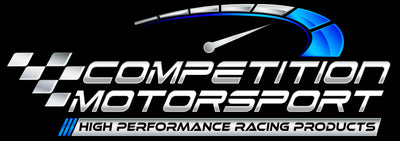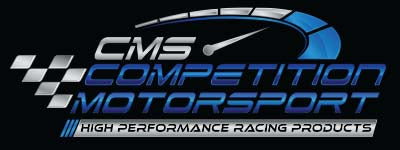
GiroDisc Racing Brakes & Technologies
Girodisc Brake Pad Spreader GDPS01
$373.00
Girodisc Brake Pad Spreader
The Right Tool for the Job
This indispensable tool is used by race teams, shops, and enthusiasts alike who have high performance four- and six-piston calipers. The Girodisc Brake Pad Spreader is designed to easily spread brake pads and pistons to facilitate quick replacement of pads and/or rotors in a shop or racing environment.
No more screwdrivers, pliers, hammers, or C-clamps! This tool will retract the pistons fully and evenly into their bores with one squeeze of the levers.
The Girodisc Brake Pad Spreader was designed to be used with popular racing brake calipers from Brembo, AP Racing, Alcon, and other performance calipers in racing and road use. To help it fit into any caliper, the amount of throw is adjustable.
Built Like a Tank. Works Like a Charm.
Insert the spreading plates one way for wider six-piston calipers, or turn the spreader 90o and use the plate sides for four-piston calipers.
The Girodisc Brake Pad Spreader is made from heavy-gauge steel, powder-coated for durability. The slider is cadmium-plated, and nylon pivot bushings ensure smooth action. It will quickly become an invaluable tool for any race team, shop, or enthusiast who changes pads and rotors frequently.

Pagid
Pagid Racing Brake Pads No. 8023 (Front)
from $289.00
Pagid Racing Brake Pad Shape No. 8023
Fits the Following Vehicles:
Make
Model
Build (Year)
Front
Rear
Alfa Romeo
4C
2014 - 20
X
Chevrolet
Cobalt SS Turbocharged
2008 - 10
X
Fiat
500 1.4 Abarth [Brembo brakes]
2009 +
X
Fiat
Abarth 124 Spider [Brembo brakes]
2016 +
X
Mazda
MX-5 Miata ND [Brembo brakes]
2016 +
X
Mazda
MX-5 Miata Global Cup Car
2016 +
X
Pagid Racing Brake Pads are engineered for high-performance driving, delivering exceptional stopping power, durability, and control under the most demanding conditions. Trusted by professional racers and performance enthusiasts worldwide, these pads are crafted using advanced friction materials and cutting-edge technology to ensure consistent performance, low fade, and excellent modulation. Whether you're on the track or tackling aggressive street driving, Pagid Racing Brake Pads provide the reliability and confidence you need to push your vehicle to its limits.
Pagid Racing Brake compounds are for steel (cast iron) rotors only unless otherwise noted.
Pagid R01 Compound:
A new compound specifically designed for the Mazda MX-5 ND, Pagid R01 is a flat medium-torque, high performance friction compound offering good modulation, control, and fade resistance. Suitable for medium temperature range applications such as high performance street driving, autocross, track days, Club Racing an Rally. .
Pagid RSL 1 Compound
Used in GT cars, touring cars and prototype endurance racing. Due to the high friction and good modulation, often used in sprint races as well. RSL 1 is a low metallic resin bonded material containing steel and aramid fibers with very high heat resistance. It maintains a constant friction level over a wide range of temperatures. Its reduced wear rate and disc friendliness make this material appropriate for endurance races.
RSL 29 Compound:
The Pagid RSL 29 (Yellow) is the world-leading endurance brake pad used by most of the winning teams in motorsport. Although designed primarily for endurance racing, many competitors use this material successfully for sprint and short distance races also. RS29 has also found favor in the growing track day market due to the level of control, good cold performance, long life and low disc wear.
Pagid RST 1 Compound
Used in Rally tarmac, GT cars and touring cars circuit racing (sprint), high down-force formula cars, NASCAR. Suitable for applications in heavy cars and where high torque is necessary against small diameter rotors. RST 1 has a very high friction level and high temperature resistance. It is a semi-metallic resin bonded material containing steel fibers. Cold friction and initial bite makes this material most appropriate for Rally and NASCAR applications.
Pagid RST 3 Compound:
RST 3 is a medium-high friction metal-ceramic compound containing steel fibers and is therefore the perfect complement of the RST product family. It captivates by its low heat conductivity. Rally tarmac and gravel, GT cars, touring cars and prototype circuit racing, formula cars and club racing. Wide range of applications due to it‘s combination of bite, friction and controllability.
Pagid RST 4 Compound:
RST 4 is a semi-metallic resin bonded material containing steel fibers. This material has a medium friction level and high temperature resistance. Typically use is in formula cars and open wheel racing. It is also very popular as a rear-axle material for rally racing (tarmac and gravel) and for front engine cars. Also used in NASCAR on long ovals.

Pagid
Pagid Racing Brake Pads No. 8077 (Rear)
from $219.00
Pagid Racing Brake Pad Shape No. 8077
Fits the Following Vehicles:
Make
Model
Build (Year)
Front
Rear
Fiat
Abarth 124 Spider
2016 - 20
X
Fiat
Abarth 124 Spider [Brembo brakes]
2016 -
X
Mazda
MX-5 Miata NC
2006 - 15
X
Mazda
MX-5 Miata ND
2016 +
X
Mazda
MX-5 Miata ND [Brembo brakes]
2016 +
X
Mazda
MX-5 Miata Global Cup Car
2016 +
X
Pagid Racing Brake Pads are engineered for high-performance driving, delivering exceptional stopping power, durability, and control under the most demanding conditions. Trusted by professional racers and performance enthusiasts worldwide, these pads are crafted using advanced friction materials and cutting-edge technology to ensure consistent performance, low fade, and excellent modulation. Whether you're on the track or tackling aggressive street driving, Pagid Racing Brake Pads provide the reliability and confidence you need to push your vehicle to its limits.
Pagid Racing Brake compounds are for steel (cast iron) rotors only unless otherwise noted.
Pagid R01 Compound:
A new Pagid compound, R01 is a flat medium-torque, high performance friction compound offering good modulation, control, and fade resistance. Suitable for medium temperature range applications such as high performance street driving, autocross, track days, Club Racing an Rally. Specifically designed for the Mazda MX-5 ND.
Pagid RSL 29 Compound:
The Pagid RSL 29 (Yellow) is the world-leading endurance brake pad used by most of the winning teams in motorsport. Although designed primarily for endurance racing, many competitors use this material successfully for sprint and short distance races also. RS29 has also found favor in the growing track day market due to the level of control, good cold performance, long life and low disc wear.
Pagid RS 44 Compound:
The Pagid RS 44 (Orange) is a carbon-based, highly controllable pad with a progressive friction curve. It has a medium initial bite and good low temperature response. A very versatile pad for use on both front and rear axles, or in conjunction with RS14 on the front axle in FWD cars. Particularly popular in Porsche club racing, fitted as OEM on the Porsche 993 RS and GT2.

Castrol
Castrol React SRF Synthetic Racing Brake Fluid (1000 ml)
from $122.00
Castrol React SRF Racing Brake Fluid
Ultra-High Wet Boiling Point Makes Castrol SRF A Standout
Castrol React SRF Racing Brake Fluid is an ultra-high performance brake fluid popular with many of the highest performing auto racing teams around the world. The key to Castrol SRF brake fluid's performance is its silicon-ester technology. Not only is it less hygroscopic (i.e., it absorbs less water) than typical glycol-based brake fluids, Castrol SRF also reacts chemically with any absorbed water to further reduce its adverse effects on high-temperature braking performance.
The result is an almost unheard of 518° F (270° C) wet boiling point, more than 100° F higher than most other racing brake fluids!
Exceeds SAE 1703, ISO 4925, JIS K2233, FMVSS No. 116 DOT3 and DOT 4 specifications.
Note: Castrol SRF is not a silicone-based brake fluid (i.e., DOT 5) and is compatible with most factory brake systems and fluids, including DOT 3 and DOT 4 fluids. Always follow vehicle manufacturer's recommendations when adding brake fluid.
Castrol React SRF Racing Brake Fluid Typical Properties:
Dry Boiling Point: 590°F (310°C)
Wet Boiling Point: 518°F (270°C)
Superior anti-vapor lock properties
One-liter (1000ml) bottle



